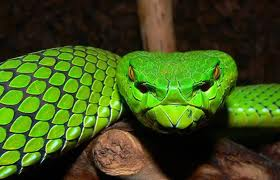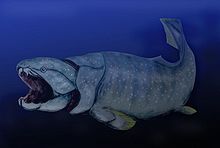 I’m amazed at how many people have powerful dreams about snakes. Serpents are truly the most memorable creatures of the dream world. Their presence in a dream is almost always vivid, mysterious, and attention-grabbing.
I’m amazed at how many people have powerful dreams about snakes. Serpents are truly the most memorable creatures of the dream world. Their presence in a dream is almost always vivid, mysterious, and attention-grabbing.
When asked how to interpret people’s snake dreams, I struggle to say something that’s helpful without imposing my outsider’s view on the dreamer. I can make general statements about traditional symbolism, but that always runs the risk of leading the dreamer away from the specific details of his or her experience, where the deepest personal meanings may often be found.
As an alternative way of answering people’s questions about snake dreams, here is a dream I had a few weeks ago, on the night of February 25, plus the journal entry I wrote following the dream. As you can see, I don’t come to a final conclusion about the dream’s message. Instead I free associate about the personal web of memories and feelings that seem related to it, letting the power of the dream serpent guide my reflections.
Title: The Big Green Snake Could Actually Eat Me
I’m out on a green grass field….In the bushes nearby I see a snake….it has a big green head, in the green foliage of the bushes….I’m scared and start to run, but the snake quickly comes after me….It wraps itself so its head is looking at me around my left shoulder….I realize it’s big enough to eat me, actually….I try to figure out what to do, how to keep it from squeezing and eating me….It hasn’t made a move to try doing that, but I’m scared it might….
Journal: This dream came the first night back from week-long family vacation, after a long drive and getting back into household duties. During the day I enjoyed some fun creative work, but also some stress about tasks to do this coming week. The snake is very big, and in my mind while dreaming I’m thinking out the physical details of how it would successfully consume me. At the same time, I’m aware the snake has not yet harmed me. I sense it may simply want to get close to me and check me out. I can’t outrun it, I can’t fight it—I’m in its power. Yesterday I read the first chapter of Harry Potter 7, in which Voldemort’s snake Nagini is invited to eat a person V has just murdered. Nagini is portrayed as being about the same size as the snake in my dream. So I’m like V, with the snake my close companion? Or am I about to be a victim of V and what he represents? All the green: it’s late winter/early spring around here, so lots of green foliage in our garden at home, and at the beach house while we were on vacation — Feb. 25 is the birthday of an old girlfriend, I just realized that — first love — an anniversary dream? — an early emergence of serpent power in my life? Yesterday was like other days at the end of a vacation, feeling like a pivot time; I’m anxiously getting ready to spring back into action — and I have a lot of action awaiting me — a time of massive transition — creative potential — will the snake eat me, or won’t it? Does it matter? I’m wrapped up in its power, now and perhaps forever. I don’t have a sense of the snake actually touching me; it’s coiled around me, but not binding me, just close enough so it’s head can get close to mine. Its eyes can look into mine. I definitely feel it’s trying to connect with me, size me up.
If you’re interested in learning more about snake dreams in history and psychological theories about them, scroll down the list to see this post. (titled “What Do Dreams of Snakes Mean?”) Also take a look at the comments, which include dozens of snake dreams people have shared that I’ve commented on.
If you’d like to know what Carl Jung said in The Red Book about the symbolism of snakes, see this post.
If you’d like more information about actual snakes, check out the website of the East Bay Vivarium.
 Below is the section on animal dreams from my video talk for the IASD Australian Regional Conference held last week in Sydney. I would be very interested in hearing from people whose dreams include types of animals NOT mentioned in my findings, to help us develop an even broader sense of oneiro-zoology (yes that’s a made up word!).
Below is the section on animal dreams from my video talk for the IASD Australian Regional Conference held last week in Sydney. I would be very interested in hearing from people whose dreams include types of animals NOT mentioned in my findings, to help us develop an even broader sense of oneiro-zoology (yes that’s a made up word!).



 A dream researcher friend asked if knew anything about the role of dreams in Shakespeare’s romantic comedy “A Midsummer Night’s Dream,” since she could not find any good info on the web. Here’s my response, which she suggested I post:
A dream researcher friend asked if knew anything about the role of dreams in Shakespeare’s romantic comedy “A Midsummer Night’s Dream,” since she could not find any good info on the web. Here’s my response, which she suggested I post:
